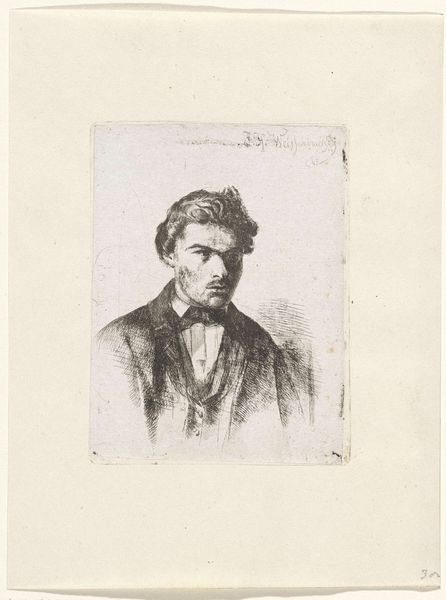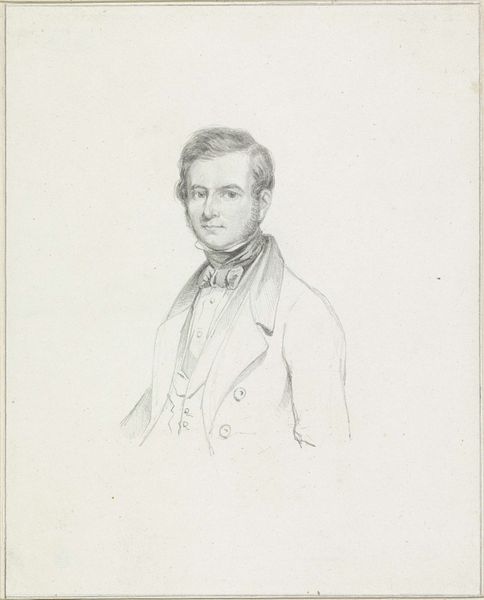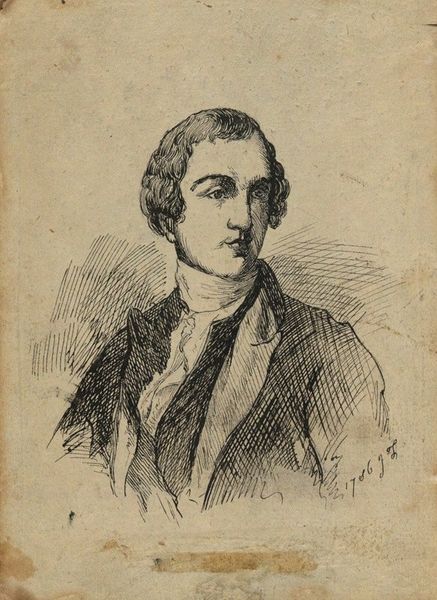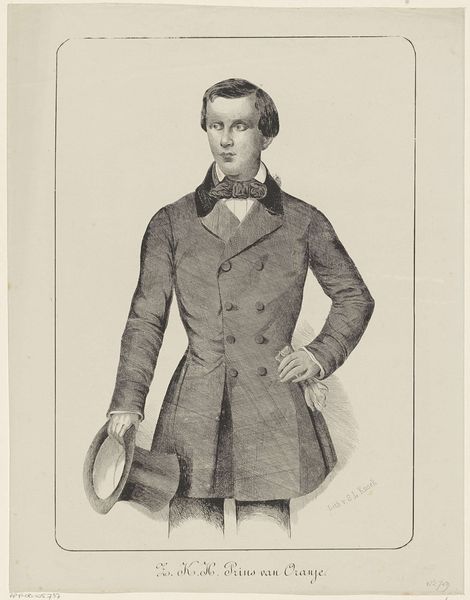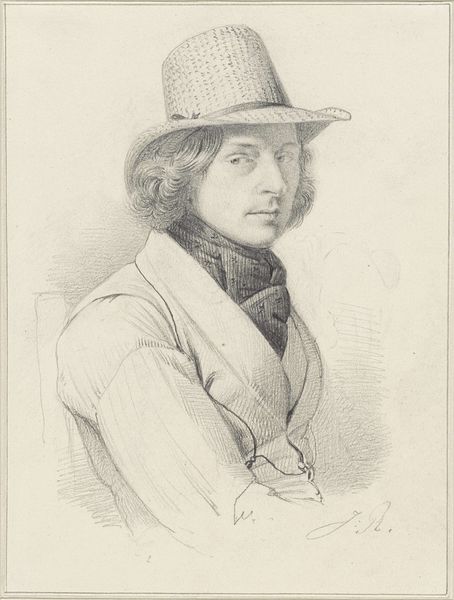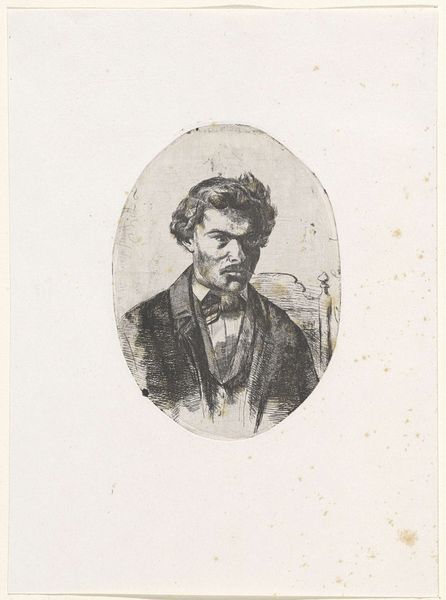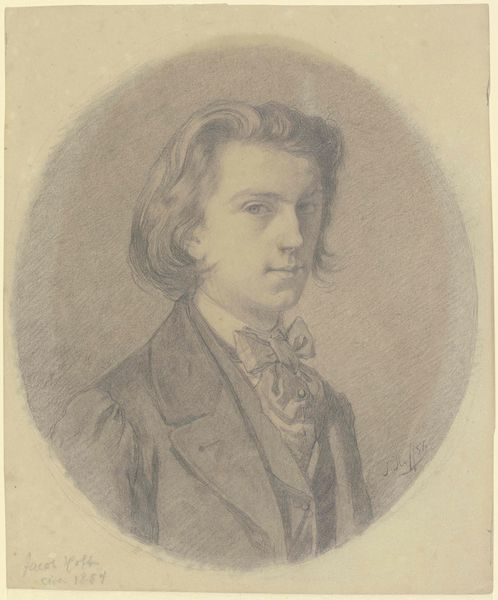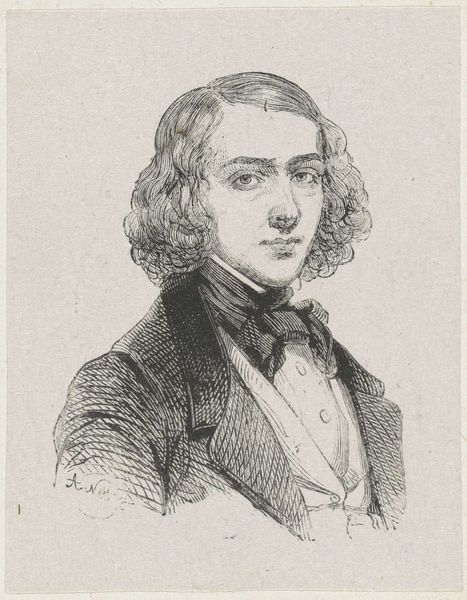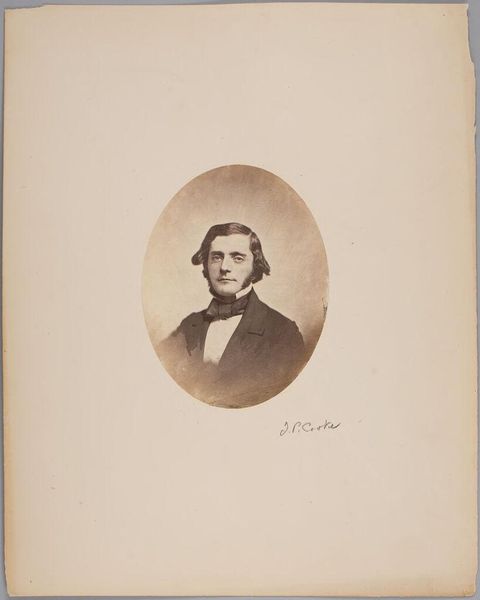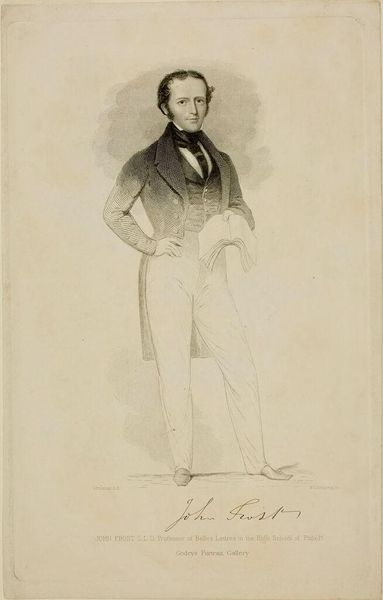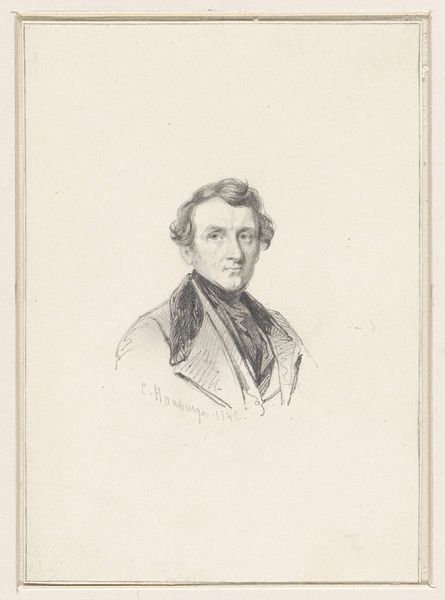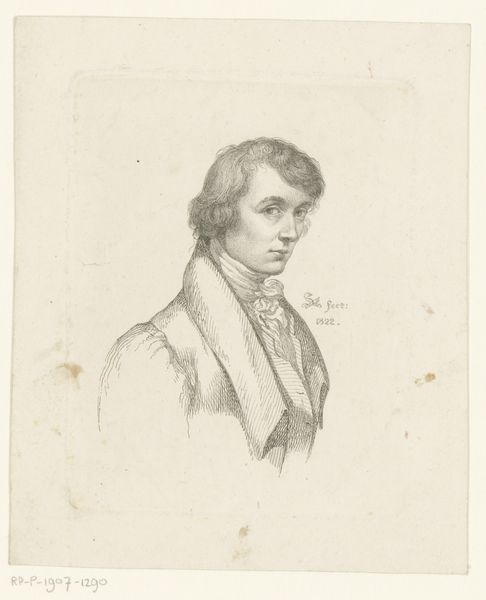
drawing, charcoal
#
portrait
#
drawing
#
neoclacissism
#
charcoal drawing
#
charcoal
#
realism
Copyright: Public Domain: Artvee
Louis Léopold Boilly created this portrait of a young man with graphite in 1837. The sitter's easy posture, fashionable coat, and carefully arranged hair suggest a member of the French upper class. This was the time of the July Monarchy, a period of relative peace and prosperity in France. Boilly’s portrait is characteristic of the period, which was defined by its conservative, bourgeois values. The rise of the middle class also affected the artistic institutions, which had previously catered to the aristocracy. Artists increasingly had to appeal to the tastes and values of the bourgeoisie, who were more interested in realistic and relatable scenes than in grand, heroic narratives. Boilly was particularly adept at capturing the nuances of middle-class life, and his portraits offer a glimpse into the social and cultural landscape of 19th-century France. To truly understand a piece like this, historians might examine fashion plates, social commentary, and museum records of the time. By investigating these sources, we can better grasp the portrait’s original context and intended meaning.
Comments
No comments
Be the first to comment and join the conversation on the ultimate creative platform.
